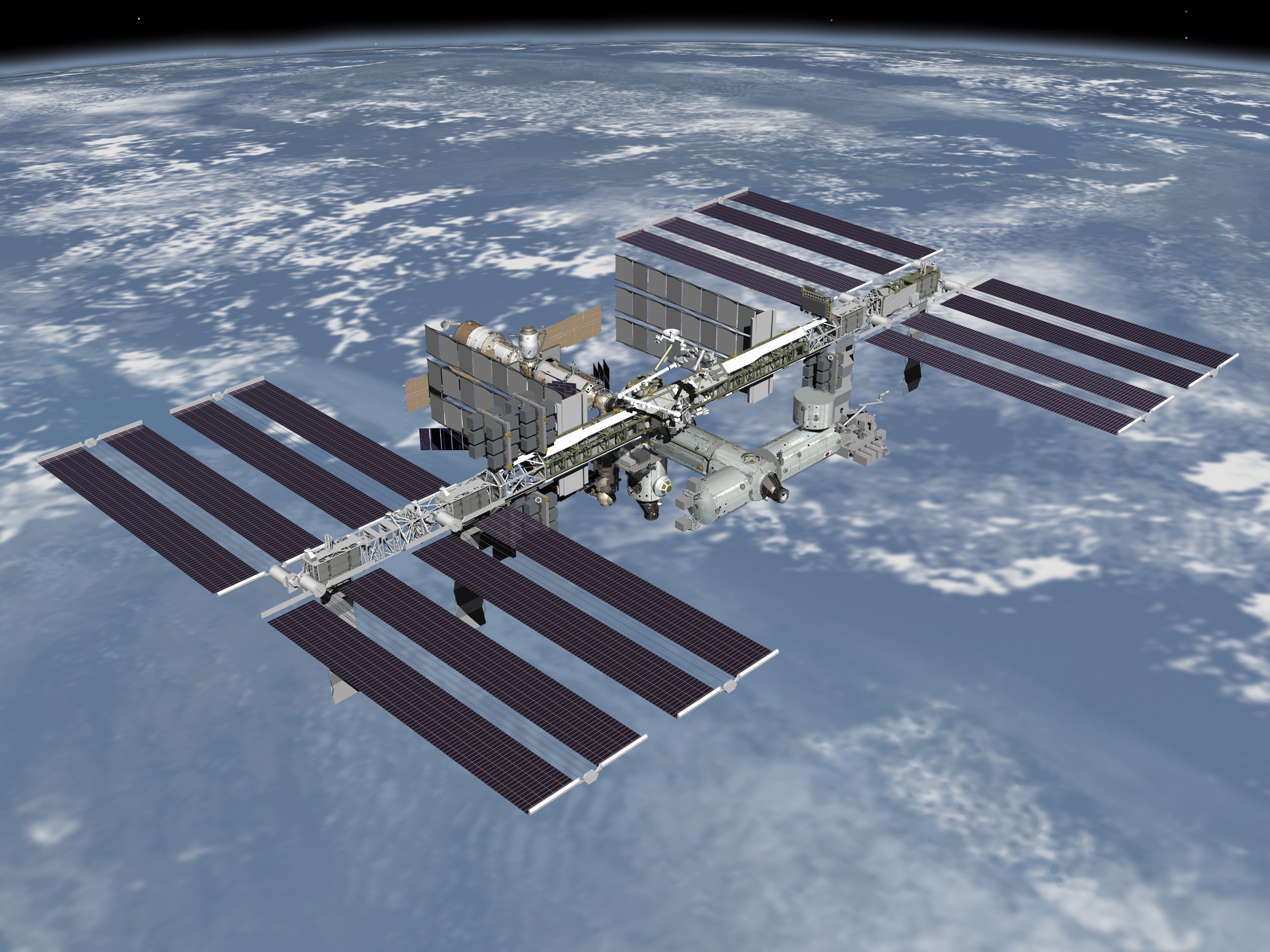The space station is one of the brightest objects in the sky.
Image Credit: NASA
You’ve seen it in Gravity, being shredded by a cloud of hugely destructive space debris and now you can see it in real life (and in one piece I might add) from your very own backyard.
Yes – I’m talking about the International Space Station (ISS) which just happens to be the second brightest object in the night sky.
Brighter than Venus, our closest planetary neighbour, but less bright than our Moon, the ISS is the largest artificial object in orbit and can be seen directly from Earth with the naked eye.
When and where to look can be found by visiting NASA’s web site, with a lookup guide providing a list of upcoming space station sighting opportunities, tailored to 4,600 locations worldwide.
Once you have this information, the trick is to look out for a white pin point of light that looks like a fast moving plane in the sky. You’ll only have several minutes though, as the station travels dozens of times higher than your normal commercial airliner and travels thousands of kilometres an hour faster, so it’s quickly out of sight.
Have a look for the ISS and then find out more about its mission here.
In the mean time, you may be interested to know that –
- The ISS is the largest spacecraft to be ever built and assembled in space
- Research undertaken from the ISS includes astrobiology, meteorology, astronomy, human research, physics, materials science and space weather
- The station orbits at approximately 390km above the planet and it travels at an average speed of 27,724km per hour
- It circles the Earth roughly every 90 minutes, or about 16 times a day
- Since Expedition 1, which launched Oct. 31, 2000, the space station has been continuously occupied with a rotating international crew
- The space station, including its large solar arrays, spans an area the size of a football field
- It has more liveable room than a conventional six-bedroom house, and has two bathrooms and a gymnasium
Bonus Link:
NASA Astronaut Cady Coleman, who spent 159 days on the ISS gave the film Gravity her tick of approval but noted that the work done aboard the station goes far beyond entertainment value. She speaks here with actress Sandra Bullock, sharing her insights regarding life in space.


